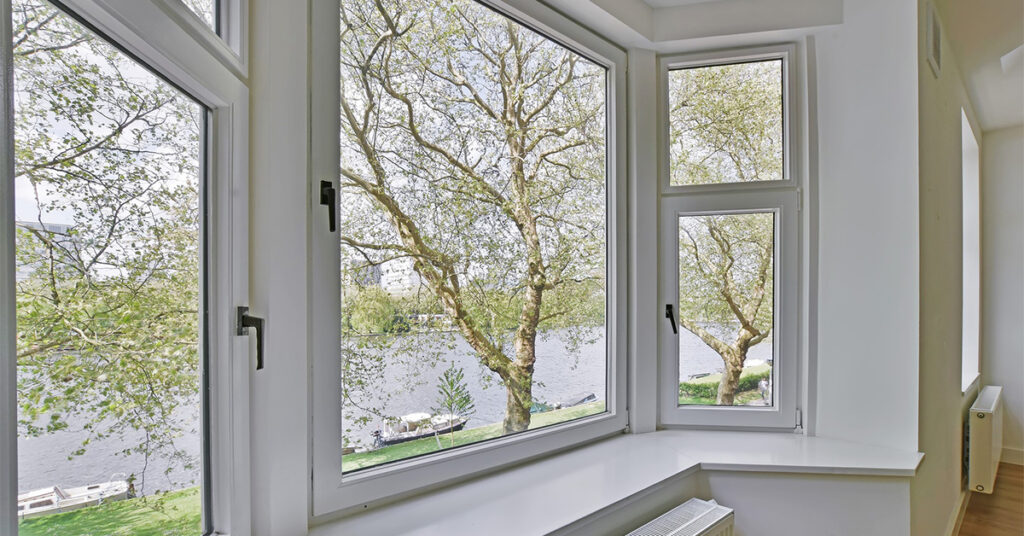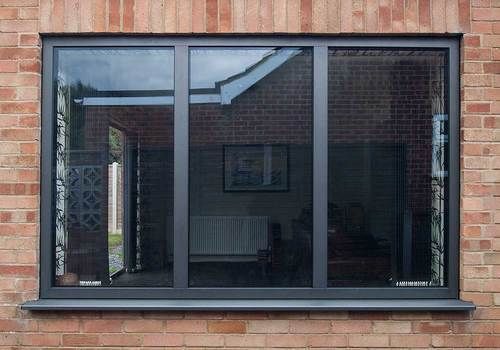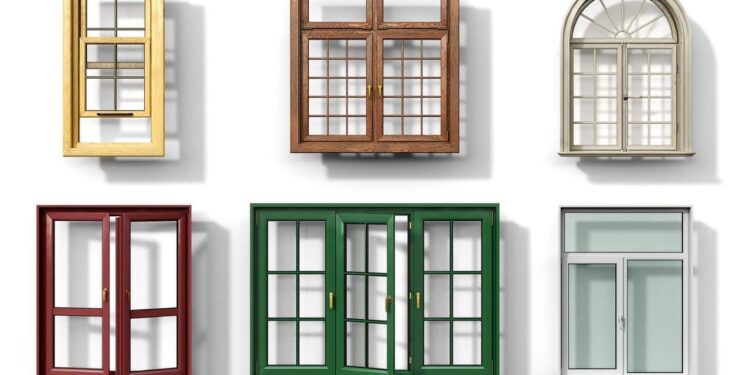When it comes to choosing windows for your home, the decision often boils down to two primary options: uPVC (unplasticized polyvinyl chloride) windows or traditional windows, which could be made of wood, aluminum, or steel. Each type of window has its own set of advantages and drawbacks, which can make the decision-making process quite complex. This article aims to provide a detailed comparison between uPVC windows and traditional windows, helping you determine which option is the best fit for your home.
Understanding uPVC Windows
uPVC windows are made from a type of plastic that is strong, durable, and resistant to the elements. Unlike other types of plastics, uPVC does not contain any plasticizers, which makes it more rigid and less flexible. This rigidity is one of the reasons why uPVC is a popular material for windows and doors. Additionally, uPVC windows are known for their energy efficiency, low maintenance, and long-lasting performance.
Key Benefits of uPVC Windows

Energy Efficiency
uPVC windows are excellent insulators. They help keep your home warm in the winter and cool in the summer, reducing the need for heating and air conditioning. This energy efficiency translates into lower utility bills and a reduced carbon footprint.
Low Maintenance
Unlike wood, which needs to be painted or stained regularly to prevent decay, uPVC requires very little maintenance. A simple wipe with a damp cloth is usually enough to keep uPVC windows looking clean and new.
Durability
uPVC is resistant to rot, rust, and corrosion, making it a durable option for windows. It can withstand harsh weather conditions, including heavy rain, strong winds, and intense sunlight, without deteriorating.
Security
uPVC windows are tough and difficult to break, providing an added layer of security for your home. They often come with multi-point locking systems, further enhancing their security features.
Affordability
uPVC windows are generally more affordable than traditional wooden or aluminum windows. Their lower cost, combined with their long lifespan and energy-saving properties, makes them a cost-effective choice for many homeowners.
Types of Traditional Windows
Wooden Windows

Wooden windows are the most traditional option and have been used in homes for centuries. They offer a classic, timeless look that can enhance the charm and character of a home. Wood is also a good insulator, helping to keep homes warm in the winter and cool in the summer.
Benefits of Wooden Windows:
Aesthetic Appeal: Wooden windows have a natural beauty and warmth that other materials can’t match.
Customizability: Wood can be easily painted or stained to match the interior and exterior décor of a home.
Environmental Friendliness: Wood is a renewable resource, making it an eco-friendly choice when sourced responsibly.
Drawbacks of Wooden Windows:
High Maintenance: Wood requires regular maintenance, including painting, staining, and sealing, to prevent rot, warping, and insect infestation.
Cost: Wooden windows tend to be more expensive than uPVC or aluminum windows, both in terms of initial cost and ongoing maintenance.
Aluminum Windows

Aluminum windows are known for their strength and durability. They are often used in commercial buildings but are also a popular choice for modern residential homes.
Benefits of Aluminum Windows:
Durability: Aluminum is resistant to rust and corrosion, making it suitable for use in coastal areas with high humidity and salt content.
Slim Profiles: The strength of aluminum allows for slimmer window frames, providing a larger glass area and better views.
Low Maintenance: Aluminum windows require minimal maintenance, as they do not need to be painted or treated regularly.
Drawbacks of Aluminum Windows:
Thermal Conductivity: Aluminum is a poor insulator, which means it can conduct heat easily. This can lead to higher energy bills unless the windows are fitted with a thermal break.
Condensation: Aluminum windows are prone to condensation, especially in cold climates. This can lead to mold and mildew problems if not addressed properly.
Steel Windows

Steel windows are less common in residential homes but are sometimes used in industrial-style or modern architectural designs.
Benefits of Steel Windows:
Strength: Steel is the strongest material available for window frames, making it ideal for large windows and doors.
Security: Steel windows provide a high level of security due to their strength and resistance to tampering.
Aesthetic Appeal: Steel windows have a sleek, modern appearance that can enhance the look of contemporary homes.
Drawbacks of Steel Windows:
Cost: Steel windows are expensive to manufacture and install, making them one of the costliest options on the market.
Maintenance: Steel windows require regular maintenance to prevent rust and corrosion, particularly in humid or coastal environments.
Comparing uPVC and Traditional Windows

When comparing uPVC windows with traditional windows, it’s essential to consider several factors, including energy efficiency, maintenance, durability, aesthetics, cost, and environmental impact.
Energy Efficiency
uPVC windows generally outperform traditional windows in terms of energy efficiency. The natural insulating properties of uPVC, combined with advanced glazing options, make these windows an excellent choice for reducing energy consumption and keeping your home comfortable year-round.
Maintenance
uPVC windows require significantly less maintenance than wooden or steel windows. While aluminum windows are also low-maintenance, they don’t offer the same level of insulation as uPVC.
Durability
Both uPVC and aluminum windows are highly durable, with uPVC offering resistance to weathering and aluminum providing structural strength. Wooden windows, while durable when properly maintained, are more susceptible to rot, warping, and insect damage.
Aesthetics
When it comes to aesthetics, the choice is largely subjective. Wooden windows offer a traditional, warm look that many homeowners love, while uPVC and aluminum windows provide a more modern, streamlined appearance. Steel windows offer a unique, industrial look that may appeal to fans of contemporary design.
Cost
uPVC windows are generally the most cost-effective option, both in terms of initial purchase and long-term savings on energy and maintenance. Wooden and steel windows tend to be more expensive, with higher ongoing maintenance costs.
Environmental Impact
Wooden windows are the most environmentally friendly option when sourced from sustainable forests. uPVC, while not renewable, is recyclable and offers energy-saving benefits that can reduce your home’s overall carbon footprint. Aluminum and steel windows have higher energy costs associated with their production but are also recyclable.
Conclusion
Choosing between uPVC windows and traditional windows depends on your priorities and the specific needs of your home. If energy efficiency, low maintenance, and affordability are your primary concerns, uPVC windows are likely the best choice. However, if you value aesthetics, tradition, and are willing to invest in maintenance, traditional wooden or steel windows might be more appealing.
Ultimately, the decision should be based on a careful consideration of all the factors discussed, ensuring that you choose the window type that best suits your home’s style, your budget, and your long-term needs.







